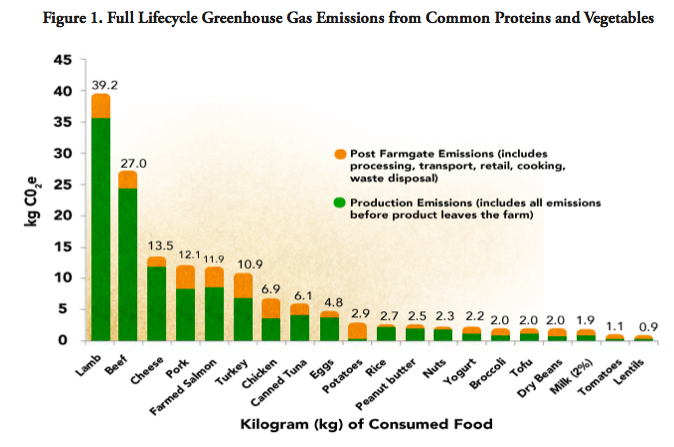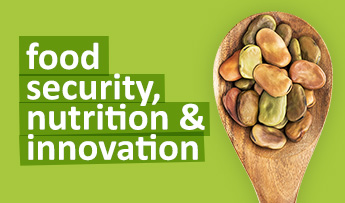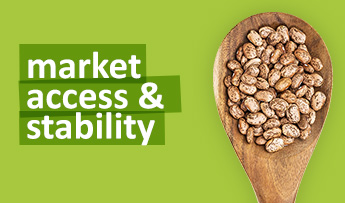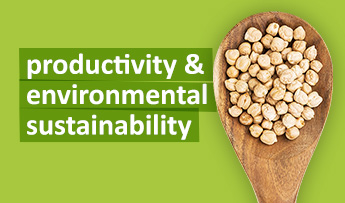To act for a healthy, hunger-free and sustainable world.
Pulses and Sustainability
Pulses play an important role for sustainability in many ways. They are an important component of crop rotations, they require less fertilisers than other crops and they are a low carbon source of protein.
Legumes are part of the rotational crops farmers can use to maintain soil fertility. In Canada for instance, where pulses are often integrated in good soil management practices, a good crop rotation includes a variety of crops grown in sequence, including cereals (wheat, barley, oats), oilseeds (canola, flax, sunflowers), and legumes (pulses).
Pulses have a positive impact on soil quality because they help fix nitrogen in the soil. This contributes to higher yields in subsequent crop rotations.
However it is not the only reason. Pulses have a direct positive impact on soil quality because they help feed soil microbes, which benefits soil health. Pulses have also been shown to produce greater amounts and different types of amino acids than non-legumes and the plant residues left after harvesting pulse crops have a different bio-chemical composition than other crop residues.
It is this diversity in soil composition that comes from a good pulse rotation, which help crops to thrive and which offers greater protection against disease-causing bacteria and fungi.
Pulses are also a protein source with a low footprint, in both carbon and water. For instance, the water footprints to produce a kilogram of beef, pork, chicken and soybeans are 43, 18, 11 and 5 times higher than the water footprint of pulses.
Pulses have a lower carbon footprint in production than most animal sources of protein. In fact, one study showed that one kilogram of legume only emits 0.5kg in Co2 equivalent, whereas 1kg of beef produces 9.5 kg in CO2 equivalent.
The very low contribution of legumes is well illustrated in the graph below.

It shows that lentils are one of the foodstuffs that contributes the least emissions, far fewer than turkey, salmon or other common sources of protein.
Nitrogen is the nutrient most needed in crop production and nitrogen fertiliser is manufactured using natural gas. But as above, pulses are quite unique among other crops, as they draw their own nitrogen from the air, so do not require the same application of nitrogen fertiliser as other crops.
By fixing nitrogen in the soil, pulses also help reduce the footprint of other crops so the benefits extend much further into the food production cycle.
For example, a recent study showed that durum wheat preceded by a biological nitrogen-fixing crop, such as chickpeas or lentils the previous year lowered its carbon footprint by 17% compared with durum preceded by a cereal crop. The impact was even stronger is a pulse-pulse wheat system, with the carbon footprint of the durum wheat down by 34% compared to a traditional cereal-cereal–durum rotation.
Resources
Pulse Canada: http://www.pulsecanada.com/environment/sustainability
American Pulse Association – Factsheet on Pulse Sustainability http://www.beanfieldssnacks.com/media/PDFs/Pulse%20Sustainability%20Fact%20Sheet.pdf
Alberta Pulse Growers: Carbon Footprint and Annual Pulses in the Canadian Prairie http://www.pulse.ab.ca/LinkClick.aspx?fileticket=tSDooCnnDtU%3D&tabid=262
Environmental Working Group (2011) Meat Eater’s Guide to Climate Change and Health http://www.ewg.org/meateatersguide/
Gan, Y., Liang, C., Wang, X. and McConkey, B. 2011. Lowering carbon footprint of durum wheat by diversifying cropping systems. Field Crops Research. 122: 199–206. http://www.sciencedirect.com/science/article/pii/S0378429011001158





